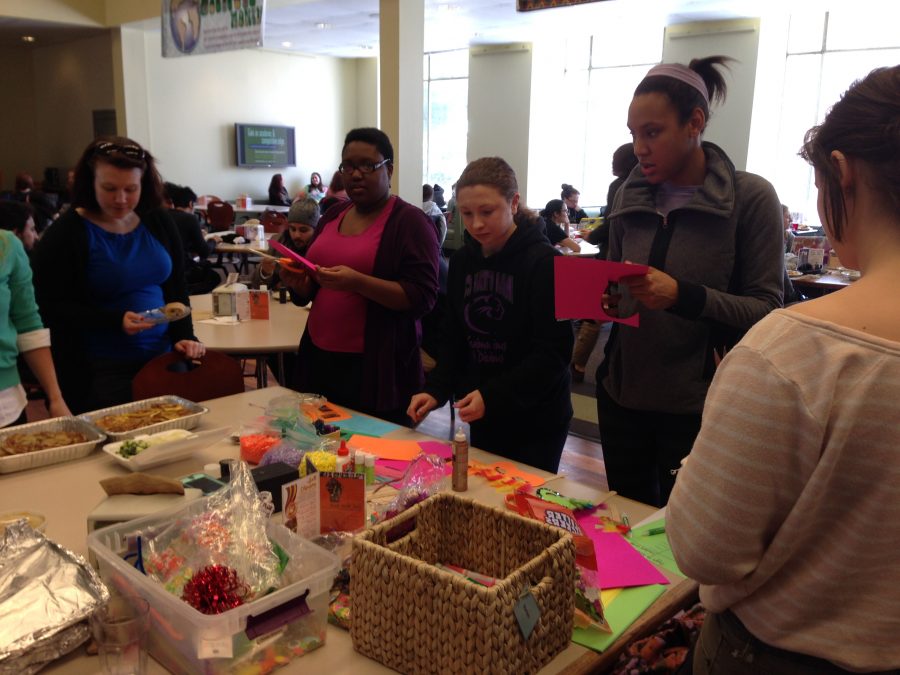At lunchtime on Tuesday, February 11, the Laughlin Intercultural Living Learning Community and Student Affairs celebrated the Brazilian holiday Carnival at Anderson Dining Hall.
A craft table stood in the center of the dining hall, amongst tables of people eating and chatting. Brightly colored feathers, sequins, and stickers covered the table, and students were encouraged to make and decorate paper masks with these materials. Beads and string were also available for making colorful necklaces and bracelets.
Popular Brazilian music blared from a speaker in the center of the table. One artist featured on the playlist was Brazilian pop star Anitta.
Student Affairs and the Intercultural LLC chose to celebrate Carnival because of its significance in Brazil, the home country of seven students currently studying at Chatham.
“We want to make [students of all nationalities] feel comfortable and at home,” said Ciarra Karnes, Graduate Assistant for Student Affairs. “We thought it was important to celebrate things that are important to them.”
Carnival is one of Brazil’s most famous holidays, and “festivities are intense, day and night,” according to a flier distributed at the craft table by Student Affairs. Carnival occurs from the Friday to the Tuesday before Ash Wednesday and the onset of Lent. This year, it will begin on February 28 and end on March 4.
The celebrations of Brazilian Carnival differ from region to region. According to Brazilian student Gabriela Raquel, larger cities like Rio de Janeiro and her hometown São Paulo host parades. In these parades, different samba schools (or large groups who perform the samba style of dance) come together to compete.
They perform on parade floats, and their dances “tell a story for the people.” After two days of parades, the winning group is determined.
In the northern city Bahia, celebrations focus on music rather than dance. According to Raquel, famous singers perform music of the axé genre on trucks that drive in parades.
Despite being the focus at Tuesday’s celebration, masks are found in only a few Carnival celebrations, according to Raquel. Children from all parts of the country may make paper masks to wear. Adults in the northern city Fortaleza also wear masks and perform the frevo dance style with umbrellas.
Brazilian Carnival attracts millions of participants and observers each year. According to Student Affairs’ information, Rio de Janeiro’s Carnival celebration attracted 4.9 million people last year, 400,000 of whom were not Brazilian.
“It makes me want to go to see Carnival for myself,” said first-year Megan A. Cooper. “Having Brazilian students to talk to was interesting because I got to see it from the point of view of someone who has actually been there.”
In addition to the craft supplies and conversation, Student Affairs supplied food for those who participated. This food was not Brazilian; rather it represented a mix of Southeast Asian cultures. Chicken satay and scallion pancakes were among the dishes provided.


